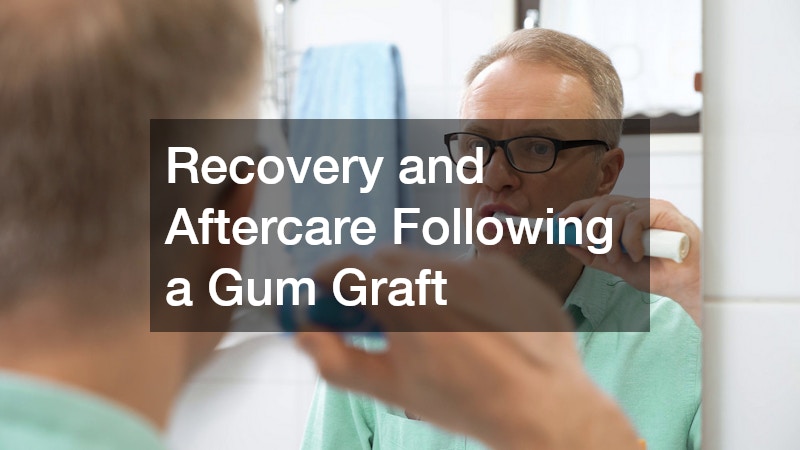What to Expect from a Periodontist During a Gum Graft Procedure
A gum graft procedure can feel intimidating if it’s your first time, but understanding the process can help reduce anxiety and ensure you are prepared. Visiting a periodontist for this type of surgery is an important step toward protecting your oral health, restoring gum tissue, and improving the appearance of your smile. This article provides a comprehensive guide to what patients can expect before, during, and after a gum graft procedure.
What is a Gum Graft Procedure?
The Gum Graft Procedure
A gum graft is a surgical procedure designed to restore gum tissue that has receded due to periodontal disease, trauma, or other factors. During the procedure, a periodontist takes tissue from another part of your mouth, often the roof of your mouth, or uses donor tissue to cover exposed tooth roots. The graft is then carefully secured to encourage healing and integration with your existing gums.
The main goal is to protect tooth roots, reduce sensitivity, and enhance the overall aesthetics of your smile.
Common Reasons for Undergoing a Gum Graft
Several conditions may lead a periodontist to recommend a gum graft. Gum recession is the most common reason, often caused by aggressive brushing, periodontal disease, or genetics. Exposed roots can lead to increased sensitivity, a higher risk of decay, and a less attractive gumline. In some cases, a gum graft may be part of a broader treatment plan to manage advanced gum disease, strengthen oral tissues, or prepare the mouth for restorative procedures such as dental implants.
Benefits of a Successful Gum Graft
When performed by a skilled periodontist, a gum graft can provide multiple benefits. These include protection of exposed tooth roots from decay, reduction in tooth sensitivity, improved gum health, and enhanced aesthetics of your smile. A successful graft can also prevent further gum recession and support long-term oral stability, making it an important procedure for patients at risk of progressive periodontal disease.
How to Prepare for Your Gum Graft Appointment
Pre-Procedure Consultation
Before your gum graft procedure, you will meet with a periodontist for a comprehensive evaluation. This consultation typically includes a review of your medical and dental history, a thorough examination of your gums and teeth, and imaging studies if needed. Your periodontist will discuss the recommended type of graft, expected outcomes, potential risks, and answer any questions you may have. This consultation ensures that both you and your dental team are aligned and that the procedure is tailored to your specific needs.
Preoperative Instructions
Your periodontist will provide specific instructions to prepare for the procedure. These may include avoiding certain medications, maintaining good oral hygiene, and following dietary restrictions. Patients are often advised to eat a light meal before surgery and arrange for transportation home, as sedation or anesthesia may be used during the procedure. Following these instructions carefully can help minimize complications and support a smoother recovery.
What Happens During the Gum Graft Procedure?
Steps of the Procedure
The procedure typically begins with anesthesia to ensure comfort. The periodontist then carefully removes tissue for the graft or prepares donor tissue, positions it over the affected area, and secures it with sutures. The goal is precise placement to encourage optimal integration and healing. In some cases, protective coverings or periodontal dressings are applied to safeguard the surgical site during the early recovery phase.
Duration and Complexity
Gum graft procedures can vary in length depending on the type and number of grafts, the area being treated, and the complexity of the case. Most procedures last between one to two hours, but your periodontist will provide a more accurate timeline during your consultation. Factors such as multiple grafts or additional periodontal treatments can extend the procedure slightly.
Role of the Periodontist and the Team
A periodontist is specially trained to perform gum grafts and other advanced procedures involving the gums and supporting bone. During surgery, the periodontist leads the procedure while the dental team assists with preparation, anesthesia, patient monitoring, and postoperative care instructions. Their coordinated efforts ensure precision, safety, and a supportive experience throughout the process.
Recovery and Aftercare Following a Gum Graft
Immediate Post-Procedure Care
After the procedure, patients may experience mild swelling, tenderness, or minor bleeding. Your periodontist will provide instructions for the first 24-48 hours, which may include avoiding certain foods, using ice packs, taking prescribed pain medications, and maintaining gentle oral hygiene. Following these instructions carefully is crucial for reducing discomfort and preventing complications.
Follow-Up Appointments
Follow-up visits with your periodontist are critical to monitor healing, remove sutures if necessary, and assess the success of the graft. These appointments allow the periodontist to address any concerns and make adjustments to ensure optimal outcomes. Consistent follow-up care increases the likelihood of a successful, long-lasting result.
Being well-informed about a gum graft procedure can significantly reduce anxiety and improve your experience. Consulting a skilled periodontist, following preoperative instructions, and adhering to postoperative care guidelines are essential steps in achieving a successful outcome.







